Setting pace: long-awaited showing of Robert Rauschenberg's late works draws snaking queues in New York

Robert Rauschenberg, the revered painter and print maker who also turned to assemblage and installation work, has never stopped astounding art enthusiasts, so it’s no surprise that Pace Gallery’s ‘Robert Rauschenberg: Anagrams, Arcadian Retreats, (A Pun)’, which opened this week in New York, is dedicated to the artist pioneering new methodology that combines the dye transfer process of continuous color photography with large scale paper (and even laminate) panels, and sees queues going around the block. Staged together with the Robert Rauschenberg Foundation, the show marks the first time Pace Gallery has shown the artist's works since his death in 2008.
‘Rauschenberg galvanized the artists of the second half of the 20th century and contributed to the rise of every art movement of the sixties and seventies straight through,’ says Marc Glimcher, president of Pace. A case in point: the artist’s groundbreaking work of the 50’s and 60’s alone not only preceded Pop art, but also Neo-Dadaism. At the same time, Rauschenberg’s oeuvre also made a profound impact on both Minimalist and Conceptual artists.
What makes the works on view so extraordinary is that Rauschenberg’s water-soluble inkjet transfer process led to a fluid painterly appearance. Such pivotal examples as the artist’s 1996 piece, ‘Fusion (Anagram)’ which stretches more than twelve feet in width, practically envelops the viewer with disparate images ranging from bottles of Pepsi, bicycle wheels and electric light bulbs that seem lost in a haze. It’s that notion of capturing out-of-the-blue elements, such as bags of balloons and Grecian sculptures that leave the viewer searching for yet more recognizable objects.
It’s a wonderful precursor to the Tate Modern’s Rauschenberg retrospective next year – the institution’s first highlighting of the artist’s oeuvre since his death.
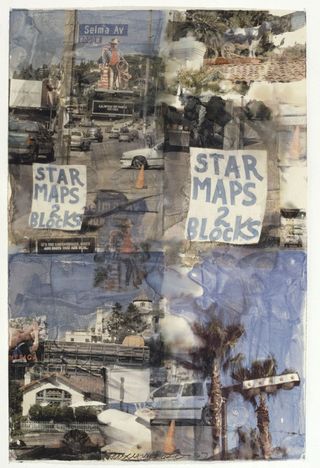
The exhibition focuses on Rauschenberg's pioneering methodology that combined the dye transfer process of continuous color photography with large scale paper (and even laminate) panels. Pictured: 'Chateau Shadow (Anagram)', 1997, inkjet dye transfer on paper
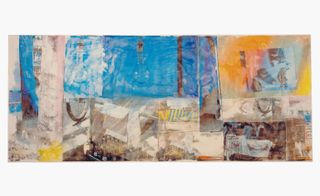
Pictured: 'Fusion (Anagram)', 1996, inkjet dye transfer on paper, which stretches more than twelve feet in width
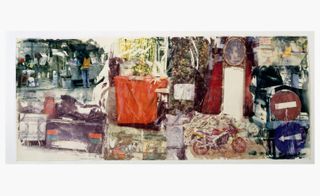
Just opened this past weekend, the exhibition has caused queues to snake around the block. Pictured: 'Street Peacock (Anagram)', 1997, inkjet dye transfer on paper
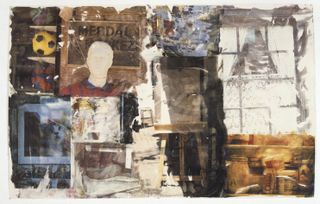
What makes the works on view so extraordinary is that Rauschenberg’s water-soluble inkjet transfer process led to a fluid painterly appearance. Pictured: 'Fiction (anagram)', 1996, inkjet dye transfer on paper
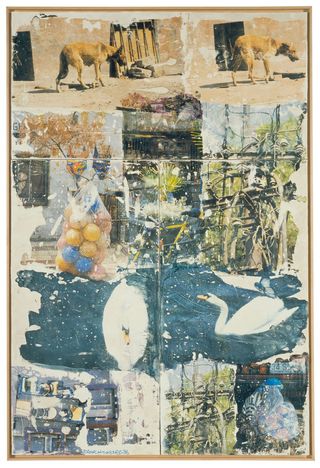
Pace Gallery's exhibtion is a wonderful precursor to the Tate Modern’s retrospective next year. Pictured: 'Temple (Arcadian Retreat)', 1996, fresco, artist’s frame
INFORMATION
‘Robert Rasuchenberg: Anagrams, Arcadian Retreats, Anagrams (A Pun)’ will be open until 12 December
ADDRESS
Pace Gallery
534 West 25th Street
New York
Wallpaper* Newsletter
Receive our daily digest of inspiration, escapism and design stories from around the world direct to your inbox
-
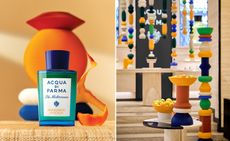 Discover Acqua di Parma’s new Mandarino di Sicilia fragrance at Milan Design Week 2024
Discover Acqua di Parma’s new Mandarino di Sicilia fragrance at Milan Design Week 2024Acqua di Parma and Fornice Objects bring the splendour of Sicilian mandarin fields to Milan to celebrate new fragrance Mandarino di Sicilia
By Simon Mills Published
-
 First look at Samba Room, London’s innovative cocktail lounge packed with Brazilian energy
First look at Samba Room, London’s innovative cocktail lounge packed with Brazilian energyLondon’s Samba Room, an extension of SushiSamba, is a dynamic bar, lounge and private dining space designed by Fabled Studio
By Tianna Williams Published
-
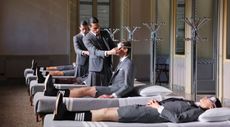 Thom Browne shows how to make the perfect bed with theatrical performance at Milan Design Week 2024
Thom Browne shows how to make the perfect bed with theatrical performance at Milan Design Week 2024American fashion designer Thom Browne makes his Milan Design Week debut with a new homeware collection created in collaboration with historic linen company Frette
By Scarlett Conlon Published
-
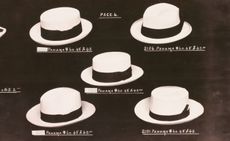 The Met’s ‘The Real Thing: Unpacking Product Photography’ dissects the avant-garde in early advertising
The Met’s ‘The Real Thing: Unpacking Product Photography’ dissects the avant-garde in early advertisingA new exhibition at The Metropolitan Museum of Art in New York explores the role of product photography and advertising in shaping the visual language of modernism
By Zoe Whitfield Published
-
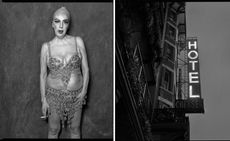 Tony Notarberardino’s Chelsea Hotel Portraits preserve a slice of bygone New York life
Tony Notarberardino’s Chelsea Hotel Portraits preserve a slice of bygone New York life‘Tony Notarberardino: Chelsea Hotel Portraits, 1994-2010’, on show at New York’s ACA Galleries, is the photographer’s ode to the storied hotel he calls home and its eclectic clientele
By Hannah Silver Published
-
 ‘LA Gun Club’: artist Jane Hilton on who’s shooting who
‘LA Gun Club’: artist Jane Hilton on who’s shooting who‘LA Gun Club’, an exhibition by Jane Hilton at New York’s Palo Gallery, explores American gun culture through a study of targets and shooters
By Hannah Silver Published
-
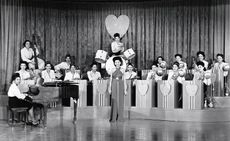 Detroit Institute of Arts celebrates Black cinema
Detroit Institute of Arts celebrates Black cinema‘Regeneration: Black Cinema 1898-1971’ at the Detroit Institute of Arts (DIA) brings lost or forgotten films, filmmakers and performers to a contemporary audience
By Anne Soward Published
-
 BLUM marks 30 years of Japanese contemporary art in America
BLUM marks 30 years of Japanese contemporary art in AmericaBLUM will take ‘Thirty Years: Written with a Splash of Blood’ to its New York space in September 2024, continuing its celebration of Japanese contemporary art in America
By Timothy Anscombe-Bell Published
-
 Todd Gray’s sculptural photography collages defy dimension, linearity and narrative
Todd Gray’s sculptural photography collages defy dimension, linearity and narrativeIn Todd Gray’s New York exhibition, he revisits his 40-year archive, fragmented into elaborated frames that open doors for new readings
By Osman Can Yerebakan Published
-
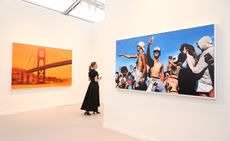 Frieze LA 2024 guide: the art, gossip and buzz
Frieze LA 2024 guide: the art, gossip and buzzOur Frieze LA 2024 guide includes everything you need to know and see in and around the fair
By Renée Reizman Published
-
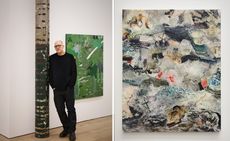 New York artist Christopher Astley showcases an alternative natural world
New York artist Christopher Astley showcases an alternative natural worldAt Martos Gallery in New York, Christopher Astley’s paintings evoke an alternative natural world and the chaos of warfare (until 16 March 2024)
By Tianna Williams Published